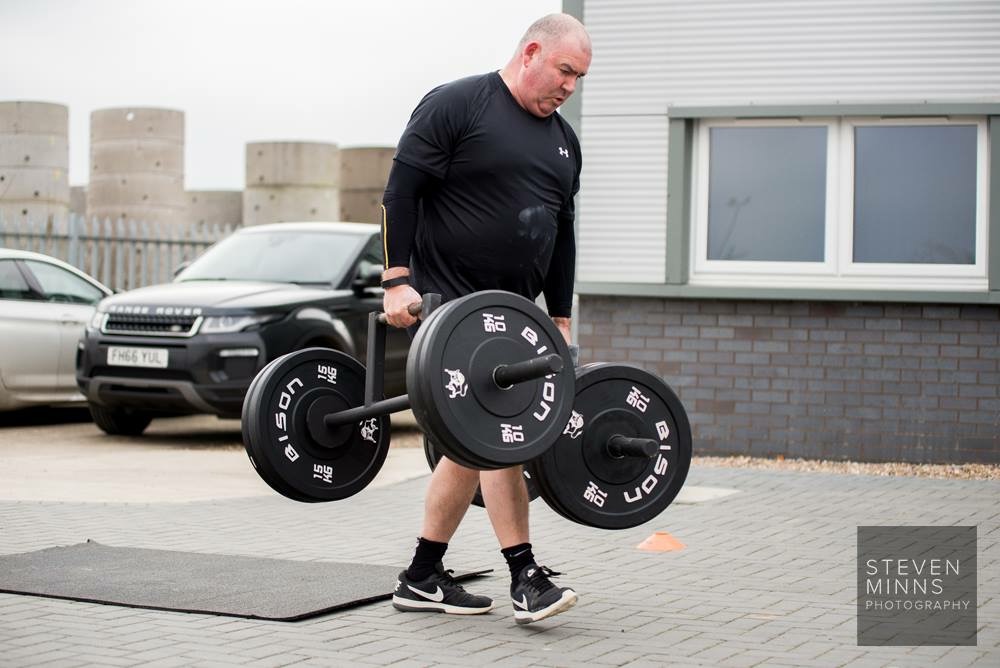HIIT refers to High-intensity interval training and is an approach to exercise which can help promote fat loss, get you seriously fit, and gives you back as much as you’re willing to give. Remember that old-school rocky saying, no pain no gain then that is exactly what you’re getting with HIIT. Regardless of the hard-hitting label that follows this style of interval training it can be adaptable to suit all ages and fitness levels with low impact programs available too.
A study investigated the impact of a 20-week endurance-training program and 15-week HIIT program on fat metabolism and muscle mass. The endurance program had a greater energy demand but the HIIT program delivered the greater reduction in body fat compared with the endurance program. When the energy demand of HIIT training was equivalent to endurance based training; the decrease in skin fold measurements for assessing body fat was nine fold greater with the HIIT program. In conclusion, the metabolic adaptations taking place in your muscles as a response to HIIT training promotes more effective fat oxidation.
Benefits of High-Intensity Interval Training
HIIT training can be your secret weapon in your toolbox when used effectively for proven health benefits backed up by research. Here are some reasons why you should consider high-intensity interval training when designing your weekly training regiment. Studies have shown that HIIT workouts:
- Boost Aerobic and anaerobic fitness
- Help regulate blood pressure
- Improve cardiovascular health due to physiological and metabolic adaptations.
- Better Insulin sensitivity (which helps your muscles use glucose for fuel to make energy)
- Reduce abdominal fat and improve body composition whilst maintain muscle mass or even building lean tissue in some cases.
In addition to these proven benefits and how we can promote fat loss and unlock more energy is due to physiological and metabolic adaptations taking place inside your muscle cells. Mitochondria are the battery pack in every muscle cell which produces energy during exercise through the breakdown of carbohydrates and fat using oxygen. An increase in these mitochondria and oxidative enzymes in our working muscles will lead to more effective fat oxidation and carbohydrate breakdown for fuel. This increases our muscles capacity to produce greater contractile force and for longer periods of time. Just imagine a hyper-active child bouncing off the walls with energy and that is what healthy mitochondria in your cells looks like when it’s firing on all cylinders.
Another metabolic benefit of HIIT is the after-burn effect. The increase in energy expenditure and heart rate after your workout is required to restore your muscle cells back to their pre-workout state. Therefore our muscles cells perform physiological and metabolic processes at a higher rate and for longer after your HIIT due to the intensity of the workout. Studies indicate a higher after-burn effect with HIIT training when compared to steady-continuous cardio.
Developing an HIIT Exercise Program
Four factors are considered in developing a HIIT Program: the duration, frequency, and intensity of workout intervals, and the length of recovery intervals. High-intensity workouts are generally considered to be 80% or more of your maximum intensity. Recovery intervals should be less than 40% effort or even zero effort. The biggest mistake with interval training is often the importance of your recovery period. HIIT requires maximum effort in your work period therefore your rest period should contrast this amount of effort in order for your muscles to recharge ready to go all-out on your next interval. Without an effective rest period you cannot perform effectively at your maximum effort.
|
|
Level One HIIT Program Design |
Level Two HIIT Program Design |
Level Three HIIT Program Design |
|||
|
1A |
Bodyweight squat |
20secs |
Explosive jumping squats |
30secs |
Kettlebell swing |
40secs |
|
1B |
Rest |
40secs |
Rest |
30secs |
Rest |
20secs |
|
2A |
Press ups with hand elevated |
20secs |
Press ups |
30secs |
Press ups with feet elevated |
40secs |
|
2B |
Rest |
40secs |
Rest |
30secs |
Rest |
20secs |
|
3A |
Ab crunches |
20secs |
Sit Ups |
30secs |
Medicine ball slams |
40secs |
|
3B |
Rest |
40secs |
Rest |
30secs |
Rest |
20secs |
|
4A |
Box step up |
20secs |
Bodyweight lunges |
30secs |
Scissor lunges |
40secs |
|
4B |
Rest |
40secs |
Rest |
30secs |
Rest |
20secs |
|
5A |
Dumbbell shoulder raises |
20secs |
Overhead press with dumbbells |
30secs |
Squat into overhead press w/ med ball |
40secs |
|
5B |
Rest |
40secs |
Rest |
30secs |
Rest |
20secs |
|
6A |
– |
– |
Plank |
30secs |
Russian twists with medicine ball |
40secs |
|
6B |
– |
– |
Rest |
30secs |
Rest |
20secs |
|
|
Repeat x1-2 |
Repeat x2-4 |
Repeat x3-4 |
|||
Some of my best chosen interval programs involve modified strongman exercises from farmers walks, loading races with atlas stones, or the yoke. These are great fun and using rope training too is perfect for HIIT too.
Why is HIIT so popular?
- Minimal Cost. HIIT can be performed using minimal or no equipment. Your own bodyweight can be your engine in this workout from HIIT choosing all-out hill sprints to strength-based exercises at home.
- Anywhere Anytime as HIIT can easily be adaptable for all fitness levels with just enough room for you and your drinks bottle. There are no excuses to get in better shape!
- Time-effective. Sometimes your day does not go to plan and other commitments take over therefore your planned workout could seem impossible to complete. Why not get more bang for your buck and choose HIIT workout as you can still elevate your heart rate, train your muscles, boost your metabolism, and feel great in just 15 minutes.
- Keep it Simple! Since you’ll be pushing your body to its maximum level, build a warm-up and cool down into your training by using a moderate activity level to prepare your muscles and cardiovascular system for high-intensity activity. There is a reason why press ups, squats, walking lunges, and battle ropes have always been the main staple in strength training and HIIT programs. They are simple and they work.
Perry et al. (2008) showed that fat oxidation was significantly higher and carbohydrate oxidation significantly lower after 6 weeks of interval training. Talanian et al. (2007) showed a significant increase in fat oxidation with HIIT in only 2 weeks.
For years continuous steady-state cardio has been the chosen method for weight loss. However, when we take out performance goals from your training program and we understand the difference between general weight loss and fat loss as this is a common misconception when speaking to uneducated gym goers or exercise enthusiasts. This could be due to all the diet fads and myths you can find online or social media that has dilutes the good quality information about nutrition and training we should be reading. The weight loss approach is often driven by cutting calories in your diet down to dust and running most days of the week to then wake up everyday and step on the scales in your bathroom, after a pee of course. We are less concerned about our physique development but ensuring you can fit into 11 stone jeans or 10st 4lb dresses if only they existed. The fat loss approach is about developing your physique and reducing body fat to promote longevity and a leaner physique. Research shows that HIIT leads to similar and in some cases better fat loss in shorter periods of time. In a 6-week training study, this showed increases in mitochondria among subjects who performed a HIIT program with maximal cycling sprints for 3 days/week and similar increases in subjects who 40-60 minutes of steady-state cycling at a moderate intensity for 5 days/week. Introducing HIIT (at the appropriate level of intensity and frequency) into your cardiovascular training can help you get reach your goals time efficiently. And, since both HIIT and continuous cardiovascular exercise improves all of these meaningful physiological and metabolic functions of the human body, incorporating a balance of both variations in your training is a sustainable and enjoyable approach for good cardiovascular health.
Thanks for reading my blog and I hope this knowledge about cardiovascular exercise can benefit your current exercise program and you can use exercise to promote better health and fitness
Stay Strong!
Thanks, Jake Wood








